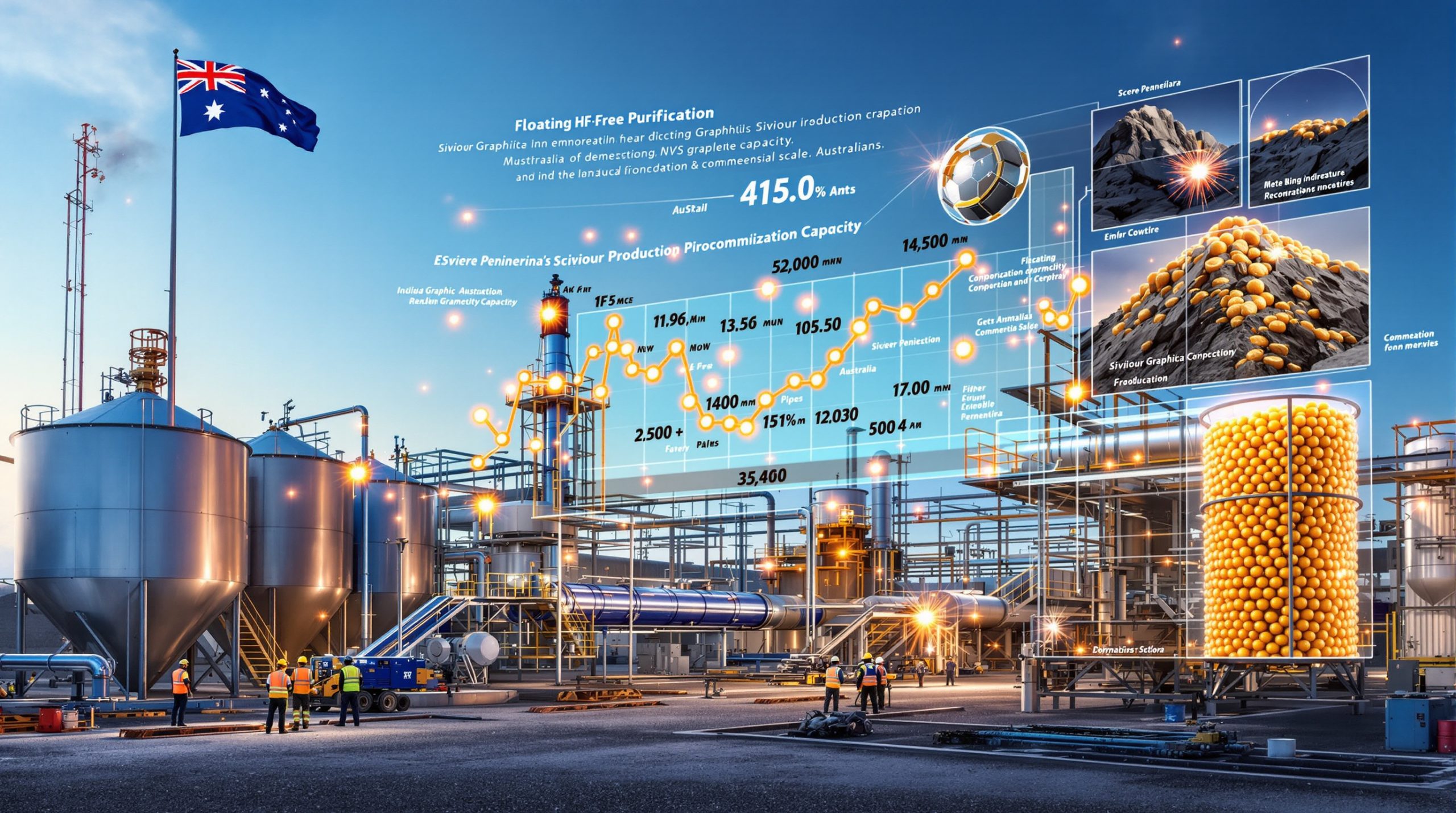What Is Driving China's Global Investment Strategy?
Economic Diversification as a Response to Domestic Pressures
China's push for global investment expansion comes amid significant economic headwinds at home. Factory activity has remained in contraction for three consecutive months as of June 2025, signaling persistent challenges in the manufacturing sector that has traditionally driven China's growth. This contraction represents just one symptom of deeper structural issues facing the Chinese economy.
The property market, once a reliable engine of growth, has entered a prolonged downturn with real estate investment falling 15.2% year-on-year in the first half of 2025. This decline has created significant ripple effects throughout the economy, impacting everything from construction to home appliance sales.
Deflationary pressures have also emerged as a serious concern, with the Consumer Price Index (CPI) remaining negative for five consecutive quarters from Q1 2024 through Q1 2025. This persistent deflation signals weak domestic demand and has complicated monetary policy decisions.
"A successful expansion in overseas income could boost China's GNI [gross national income] and help offset the negative economic impact of weaker export demand, driven by trade tensions, or subdued domestic demand stemming from weak consumer sentiment," notes Lillian Li, lead analyst at Moody's Ratings in a report published in June 2025.
The diversification strategy operates through a sophisticated mechanism: outward direct investment (ODI) effectively redirects capital from saturated domestic sectors toward high-growth emerging markets, creating new revenue streams while mitigating GDP drag from local consumption weakness.
Strategic Resource Acquisition Objectives
Beyond economic diversification, China's overseas investments reflect carefully calculated resource security priorities. According to Moody's analysts, "Investments in critical minerals for energy transition like oil and gas, technology commodities, and clean energy stem from China's strategic goals and national security concerns."
These investments follow a resource security framework that prioritizes supply chain control for strategic materials. For renewable energy technology, this means securing reliable access to lithium for EV batteries, cobalt for high-performance components, and rare earth elements essential for wind turbines and electric motors.
Advanced manufacturing security represents another critical investment driver. Chinese companies are strategically acquiring or developing overseas sources of semiconductor-grade silicon, specialty metals for aerospace applications, and technology materials that face potential export restrictions from Western nations.
Clean energy resources have become particularly important targets, with companies like CATL investing $5.1 billion in Indonesian nickel projects to secure battery metal supplies. These investments create vertical integration from raw material extraction through manufacturing, shielding Chinese companies from market volatility and potential supply disruptions.
Analyst Insight: "China's ODI strategy operates as both a defensive and offensive economic playbook. Defensively, it hedges against domestic slowdown and potential resource blockades. Offensively, it establishes manufacturing and distribution hubs that can bypass tariff barriers while claiming market share in high-growth regions." — Moody's Ratings Report, June 2025
Where Is China Directing Its Global Investments?
Emerging Market Focus
China's outward direct investment (ODI) shows a clear geographic strategy, with 90% of 2023 ODI concentrated in South and Southeast Asia, Latin America, and the Middle East, according to China's overseas investment surge. This represents a significant shift from earlier investment patterns that included substantial flows to North America and Europe.
Southeast Asia has emerged as a particularly attractive destination due to its combination of lower labor costs, growing consumer markets, and strategic location within regional supply chains. The ASEAN bloc's expected annual GDP growth of 4.9% through 2030 provides a compelling contrast to China's moderating domestic growth.
Latin America's resource wealth has attracted substantial Chinese capital, particularly in extraction industries. The $7.3 billion lithium extraction investment in Argentina's "Lithium Triangle" (2024) represents one of the largest single investments, securing crucial battery material supplies for China's electric vehicle manufacturers.
Middle Eastern partnerships have expanded beyond traditional energy sectors to include technology infrastructure, renewable energy, and manufacturing. Huawei's $1.6 billion Saudi cloud infrastructure deal (2025) demonstrates this diversification, aligning with Saudi Arabia's Neom smart city development plans while securing a strategic position in the region's digital transformation.
These emerging market investments benefit from several structural advantages compared to developed market alternatives:
- Lower regulatory scrutiny for Chinese investors
- Reduced geopolitical tensions compared to Western markets
- Complementary economic structures (resource providers partnering with manufacturing expertise)
- Growing middle-class consumer bases hungry for Chinese products
- Openness to Chinese financing models and infrastructure development
BYD's Southeast Asian Expansion Case Study
BYD's establishment of Thailand's first Chinese-owned electric vehicle manufacturing facility in Rayong (2024) offers a compelling example of China's strategic investment approach. The facility targets ASEAN's robust 8.7% annual EV market growth, according to the ASEAN Automotive Federation's 2024 projections.
"Local manufacturing lets us bypass 30% ASEAN tariffs while accessing Thailand's EV subsidy pool," noted BYD Thailand's CEO in a May 2025 interview with the Bangkok Post. This tariff optimization strategy reduces landed costs by 18-22% compared to direct exports, according to BYD's operational disclosures.
The Thailand facility also provides significant labor cost advantages, with Thai factory wages averaging 43% of comparable positions in Guangdong province, according to World Bank data from 2024. These savings improve profit margins while maintaining competitive pricing in the ASEAN market.
Beyond immediate cost benefits, the facility serves as a regional export hub, allowing BYD to ship vehicles throughout Southeast Asia under favorable ASEAN Free Trade Area terms. This circumvents potential trade barriers while establishing BYD as a regional automotive player rather than merely a Chinese importer.
The BYD case illustrates how Chinese manufacturers are leveraging overseas investments to overcome domestic market saturation while establishing strong positions in high-growth regions—a blueprint likely to be followed by companies across multiple sectors.
How Is Beijing Supporting Chinese Companies' Global Expansion?
Financial Incentives and Support Mechanisms
The Chinese government has implemented a comprehensive suite of financial incentives to accelerate overseas investment. In 2025, the Ministry of Finance allocated $32 billion for "Going Global" subsidies, representing a significant commitment to supporting Chinese companies' international ambitions.
These subsidies operate through sophisticated mechanisms that reduce investment risks and costs. Tax rebates cover 15-20% of qualifying ODI expenses, with accelerated amortization schedules for technology transfers that improve returns on investment timelines. Companies investing in strategic sectors or Belt and Road Initiative countries receive preferential treatment, including enhanced tax benefits.
Policy banks play a crucial role in financing overseas ventures. The China Development Bank and Export-Import Bank of China provide below-market financing for qualified projects, particularly those aligning with national strategic priorities. As Chen Feng from the CCP's International Economic Department noted in June 2025, "Policy banks provide currency swap lines to bypass capital controls in high-risk markets."
Risk mitigation support has been significantly enhanced, with Sinosure (China Export & Credit Insurance Corporation) increasing political risk coverage for Venezuela oil projects to 85% in 2024. This insurance against expropriation, currency inconvertibility, and political violence reduces investor hesitation in volatile markets.
Expert Analysis: "Beijing's support system creates a financial safety net that transforms marginal overseas investments into attractive opportunities. The combination of subsidies, preferential loans, and risk insurance effectively socializes much of the downside risk while allowing companies to retain most upside potential." — Financial Times analysis, May 2025
Diplomatic and Trade Agreement Facilitation
China's diplomatic apparatus has been mobilized to support corporate expansion, with 14 bilateral investment treaties signed with RCEP nations between 2024 and 2025 alone. These treaties include stabilization clauses that freeze regulatory conditions for 10-year periods, protecting Chinese investors from adverse policy changes.
Trade partnerships are strategically crafted to create investment corridors with reduced barriers. The Regional Comprehensive Economic Partnership (RCEP) provides preferential market access for Chinese companies operating in member countries, while bilateral free trade agreements often include investment protection provisions.
Diplomatic initiatives have successfully opened previously restricted markets, particularly in regions where Chinese government financing offers attractive alternatives to Western-dominated international financial institutions. Infrastructure financing packages frequently include provisions for Chinese corporate participation, securing market access through government-to-government arrangements.
The coordination between investment flows and broader foreign policy objectives creates powerful synergies. The Export-Import Bank of China's $2.2 billion loan to Indonesia's KBH battery park in 2025 came with requirements for Chinese mineral processors' participation, demonstrating how financing can secure market position.
This comprehensive support system—combining financial incentives, diplomatic protection, and strategic trade agreements—provides Chinese companies with significant competitive advantages when pursuing international opportunities.
What Economic Benefits Does China Expect From This Investment Strategy?
Boosting National Economic Indicators
China's global investment strategy aims to deliver measurable macroeconomic benefits during a challenging domestic period. Moody's projects an annual GNI uplift of 0.8-1.2% from ODI returns, representing a significant contribution to overall economic growth.
This GNI enhancement operates through a sophisticated mechanism: repatriated profits from overseas manufacturing operations help offset export revenue declines resulting from trade tensions and tariffs. For example, Haitian International's Thai auto parts factory repatriated $480 million in profits during Q1 2025 alone, equivalent to 3% of the company's domestic segment losses during the same period.
The strategy also strengthens China's international investment position, which improved by $210 billion in 2024 according to the State Administration of Foreign Exchange. This improvement bolsters China's financial resilience during global economic turbulence and provides a counterbalance to domestic economic challenges.
Subdued domestic consumption patterns—a persistent challenge for Chinese policymakers—can be partially offset through the diversification of revenue sources. Companies generating significant offshore income become less dependent on domestic consumer sentiment, allowing them to maintain profitability and investment capacity despite local market fluctuations.
Financial Perspective: "ODI-generated foreign assets provide stabilization reserves during domestic downturns," explains Lillian Li of Moody's. This stabilization function was demonstrated during previous periods of capital outflow pressure, when overseas assets provided liquidity without requiring foreign exchange market interventions.
Long-Term Strategic Advantages
Beyond immediate economic indicators, China's investment strategy delivers several long-term strategic advantages that strengthen its global economic position. Enhanced economic diversification reduces vulnerability to sector-specific shocks, particularly important given the current property market challenges.
The increase in foreign assets available for domestic economic stabilization provides policy flexibility during periods of financial stress. These assets can be deployed to support currency stability, provide emergency liquidity, or fund strategic industrial initiatives without relying on domestic resources.
Sovereign credit ratings also benefit from this investment approach. Moody's 2024 China rating affirmation explicitly cited ODI-driven external asset growth as a positive factor. As PBOC advisor Zhang Ming noted in June 2025, "Sovereign credit upgrades require demonstrable external asset liquidity – ODI creates this."
Perhaps most significantly, the overseas investment strategy supports long-term growth potential despite domestic headwinds. By establishing manufacturing, technology, and service platforms in high-growth regions, Chinese companies can capture market share and revenue streams that outpace domestic opportunities, creating a foundation for sustained corporate growth regardless of local economic conditions.
How Are Chinese Companies Adapting Their International Strategies?
Competitive Positioning in Foreign Markets
Chinese companies are executing sophisticated market entry strategies that balance cost advantages with premium brand positioning. Rather than competing solely on price—a traditional approach that limited profit margins and brand development—companies are investing in local market research to identify premium segments where Chinese technological capabilities can command higher prices.
Adaptation of product offerings to local preferences has become a cornerstone of successful expansion. Companies like Xiaomi have developed region-specific smartphone variants that address local usage patterns, connectivity requirements, and price sensitivities. This localization extends beyond product features to include marketing approaches, distribution channels, and after-sales service models.
Manufacturing localization delivers multiple competitive advantages. Beyond the obvious tariff avoidance benefits, local production facilities enable faster response to market trends, reduced inventory requirements, and improved relationships with host country governments. The proximity to end users also facilitates product customization and rapid iteration based on customer feedback.
Research and development centers established in key regional markets are transforming how Chinese companies approach innovation. These centers combine Chinese engineering expertise with local market insights to develop technologies and products specifically tailored to regional requirements. Huawei's Europe strategic minerals projects focus on developing communications technologies that meet EU regulatory standards while addressing European customer preferences.
Market Insight: "Chinese companies are moving beyond simple cost arbitrage to develop integrated regional strategies. The most successful firms establish complete business ecosystems in each major market, combining local manufacturing, R&D, distribution, and service capabilities to operate as 'local' companies rather than foreign importers." — McKinsey Global Institute analysis, April 2025
Operational Challenges and Solutions
The expansion into diverse international markets presents complex regulatory challenges that require sophisticated navigation. Chinese companies have responded by developing specialized compliance teams with expertise in specific regional regulatory frameworks. These teams work proactively with local authorities to ensure adherence to regulations while identifying permissible operational flexibility.
Talent development represents another critical challenge. Companies are addressing this through multi-faceted approaches:
- Establishing international training centers to develop local management capabilities
- Creating exchange programs that rotate promising local employees through Chinese headquarters
- Recruiting experienced local executives with established industry relationships
- Developing hybrid management teams that combine Chinese and local leadership
Cultural integration challenges are being addressed through structured programs that build cross-cultural competency at all organizational levels. Companies like Lenovo have developed comprehensive cultural integration frameworks based on their acquisition experiences, creating playbooks that new market entrants can adapt.
Risk management frameworks have evolved to address the political and economic volatility inherent in many emerging markets. These frameworks typically include:
- Scenario planning for political transitions and policy shifts
- Currency hedging strategies tailored to local market conditions
- Relationship cultivation with key stakeholders across political spectrums
- Operational redundancy to mitigate disruption risks
- Graduated investment approaches that limit initial exposure
These operational adaptations demonstrate the increasing sophistication of Chinese companies' international strategies, moving well beyond the early stages of global expansion to develop mature approaches comparable to established multinational corporations.
What Are The Investment Patterns Across Different Industries?
Manufacturing Sector Expansion
The automotive industry leads China's manufacturing expansion, with electric vehicle and battery production facilities established across Southeast Asia, Latin America, and the Middle East. BYD's Thailand factory exemplifies this trend, serving as both a production hub and a strategic positioning move to capture ASEAN's growing EV market.
Battery manufacturing investments follow EV production, creating integrated supply chains in host countries. CATL's expansion into Indonesia leverages local nickel resources while establishing production capacity for lithium-ion batteries, serving both local assembly operations and export markets. Recent battery recycling breakthrough technologies are also being deployed in these facilities.
Consumer electronics production has shifted significantly toward emerging markets, with companies like Xiaomi, Oppo, and vivo establishing manufacturing facilities in India, Indonesia, and Vietnam. These investments reduce exposure to developed market trade barriers while tapping into growing local demand for smartphones and connected devices.
Industrial equipment manufacturing investments typically follow key infrastructure projects, creating virtuous cycles of development. Chinese construction equipment manufacturers have established production facilities in countries receiving Belt and Road Initiative funding, ensuring preferential access to project opportunities while reducing logistics costs.
Textile and apparel production continues to migrate to lower labor cost environments, with Chinese companies establishing operations in Cambodia, Myanmar, and Bangladesh. These investments often bring advanced manufacturing techniques and equipment, improving productivity while maintaining cost advantages.
Industry Perspective: "Chinese manufacturing investments follow a distinct pattern: establish production beachheads in high-growth markets, gradually increase local content and capabilities, then use these platforms to serve regional export markets. This approach reduces trade friction while maximizing market access." — Boston Consulting Group analysis, March 2025
Technology and Digital Infrastructure
Telecommunications infrastructure represents one of China's largest investment categories, with Huawei and ZTE deploying 5G networks across developing regions. These investments create technological dependencies that extend well beyond the initial infrastructure, influencing everything from device selection to application ecosystems.
Data center development has accelerated dramatically, supporting Chinese cloud service providers' international expansion. Alibaba Cloud and Tencent Cloud have established regional data centers in Southeast Asia, the Middle East, and Latin America, challenging Western providers while addressing data sovereignty requirements.
E-commerce platform investments target high-growth consumer markets with underdeveloped digital retail environments. Companies like Alibaba's Lazada and JD.com have established comprehensive e-commerce ecosystems in Southeast Asia, combining marketplace platforms with logistics networks and payment systems.
Digital payment systems based on Chinese models are expanding rapidly, particularly in markets with limited traditional banking infrastructure. These systems typically combine QR code payments, digital wallets, and merchant services, creating comprehensive financial ecosystems that can operate independently of conventional banking systems.
These technology investments demonstrate China's strategic approach to digital infrastructure development, establishing comprehensive ecosystems rather than isolated investments. By controlling multiple layers of the technology stack—from physical infrastructure through applications and services—Chinese companies create sustainable competitive advantages while building long-term market positions.
How Might Global Trade Tensions Impact This Investment Trend?
Navigating US-China Trade Frictions
Chinese companies are implementing multi-faceted strategies to circumvent potential tariff barriers. Manufacturing investments in third countries allow products to qualify for different country-of-origin designations, avoiding China-specific tariffs while maintaining supply chain control. This approach has proven particularly effective in Southeast Asia, where regional trade agreements facilitate exports to Western markets.
Diversification of manufacturing bases reduces dependency on US market access, creating flexibility to redirect production and exports based on evolving trade conditions. Companies with global production
Ready to Track the Next Major Mineral Discovery?
Harness the power of Discovery Alert's proprietary Discovery IQ model to receive instant notifications on significant ASX mineral discoveries, transforming complex data into actionable investment insights. Visit Discovery Alert's dedicated discoveries page to understand why historic mineral discoveries can generate substantial returns and begin your 30-day free trial today to position yourself ahead of the market.




